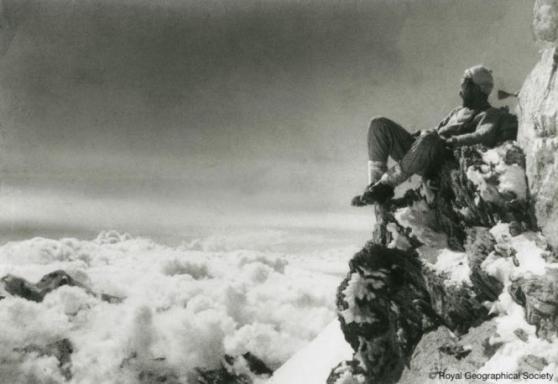Harold William Tilman, better known as Bill Tilman, occupies a special place in the pantheon of Himalayan climbers. From 1934 to 1950, despite an interruption of eight long years due to the Second World War, he covered almost the entire Himalayan arc, from Afghanistan to Everest. In 1936, at Nanda Devi (7,816 m), he covered himself in glory. He made the first ascent of the highest peak in the Indian Himalayas, a victory achieved without the use of oxygen. A fan of ultra-light expeditions and low budgets, his exceptional stamina and asceticism put his team-mates to the test. We take a look back at the career of this mountaineer and explorer, who is little known to the French.
"An expedition that can't be organised using the back of an envelope must inevitably suffer from over-organisation"... This quip sums up Bill Tilman's concept perfectly: a good expedition should be as light as possible.
See our climbs over 5,000 and 6,000 meters.
An uneventful adolescence
Nothing destined William Tilman to become a mountaineer, a talented explorer and finally a long-distance sailor. Born in 1898 into a middle-class British family, a pure product of the England ruled until 1901 by Queen Victoria, he received a strict education at a renowned public school. The British Empire dominated the world and the family's financial future was assured by the lucrative sugar trade. William Tilman proved to be a shy, rather studious child with a passion for reading.
The trauma of the First World War
1916: Bill had just turned 18. A patriot, of course, he finds himself a gunner on the Somme. Almost three long years of conflict and two wounds later, liberated but deeply marked by the guilt of still being alive, he returned to the family home in April 1919.
What to do with his life? He had acquired a taste for danger and knew how to be content with living from day to day. The narrow life in England no longer suited him.
L’aventure africaine
Août 1919, le gouvernement britannique offre, aux soldats démobilisés, 25 hectares de terre en Afrique. L’Empire, déjà vacillant, a besoin de colons pour garder sa mainmise sur ses terres lointaines. Départ pour le Kenya. A 21 ans, Bill devient agriculteur, ou plutôt défricheur agraire. Quatre jours avec une charrette à bœufs pour rejoindre le plus proche village. Chaleur, maladie, désespoir exigent un combat permanent. Une autre guerre d’usure. Dix années de vie sédentaire, entrecoupées de quelques chasses mouvementées à l’éléphant et au rhinocéros. Pas de quoi satisfaire son énergie débordante.
Tilman - Shipton: first steps together
In 1930, at the age of 32, Bill met another Kenyan settler, Eric Shipton. Ten years his junior and already an experienced mountaineer, Shipton wanted to climb Kilimanjaro (5,892 m). What was to become one of the most legendary roped parties in the history of mountaineering got off to a rocky start. Suffering from altitude sickness, Bill forced Eric to turn back before reaching the summit. The next day, they reached the summit of Mawenzi (5,149 m), a secondary but technically more difficult peak. Shipton thought he had found the right climbing partner, and Tilman his vocation.
A few months later, they found themselves at the foot of Mount Kenya. The previous year, Shipton had already climbed the mountain's two peaks, Batian Peak (5,199 m) and Nelion Peak (5,188 m). This time, he wants to make a major crossing to link the two peaks. Despite his inexperience, Bill showed great determination and unfailing resilience on this long and demanding ascent. In 1932, a final African expedition took them to the Ruwenzori Mountains, the mysterious Mountains of the Moon (5,109 m at Stanley Peak). At the time, the complexity of the approach march, the lack of reliable maps and the omnipresent fog, added to the absolute isolation, commanded admiration.
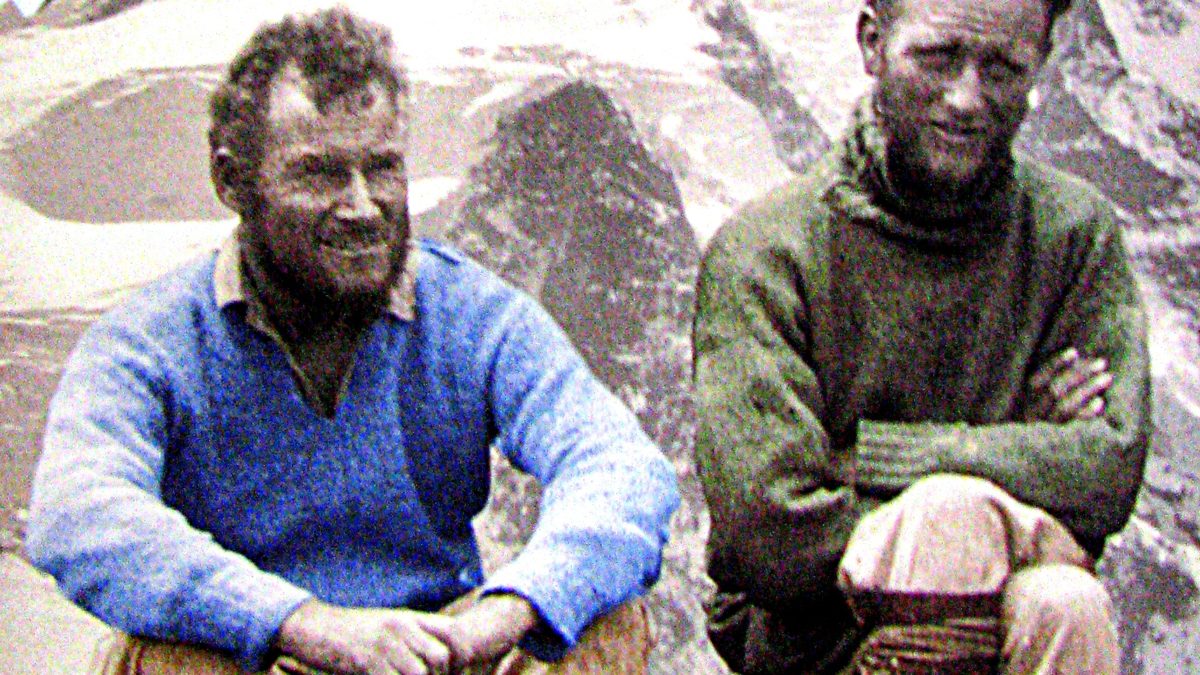 The duo Eric Shipton and Bill Tilman
The duo Eric Shipton and Bill Tilman
Lake district: it could have all ended there
To see his family again, Bill returns to England for a few weeks. A climb in the Lake District (the Mecca of British climbers) ended badly. After falling with his two rope-mates and sustaining a serious back injury, Bill crawled six kilometres up steep terrain to alert the emergency services. Medical verdict: no more mountaineering! But Bill Tilman was not a man to give up so easily. The following summer saw him successfully climb, with guides, a number of prestigious peaks in the Alps: Bans, Meije, Ecrins, Aiguille du Tour, Aiguille de l'M. He perfected his technique and gained experience. But his injury would cause him to suffer for the rest of his life.
Mount Kenya - Cameroon: 4,800 km by bike
Back to Kenya, this time as a... gold digger. An austere and unprofitable undertaking that led him to abandon Africa for good. He didn't fancy yet another trip in the heat of the Red Sea; the plane went too fast. The bicycle, neither too slow nor too fast, promised a great adventure. Departure on 14 September 1933 from Nairobi in Kenya. Lake Victoria, crossing the virgin forest of the Belgian Congo, port of Douala in Cameroon (French at the time). 4,800 km alone, with only his sleeping bag and a mosquito net as luggage. And not on a mountain bike! An old, heavy English bicycle did the trick. Instead of the tick-infested huts put at his disposal by the local chiefs, despite the not-so-reassuring presence of the lions, he preferred to bivouac. Fifty-six days of a crossing that would be unthinkable today.
The Himalayan adventure: 1934, reconnaissance at Nanda Devi
In 1931, Eric Shipton conquered Kamet (7,756 m), the second highest Indian peak, after Nanda Devi, in the Garwhal Himalayas. Building on this success, in 1933 he was selected to take part in the British Everest Expedition, led by Hugh Ruttleedge. A heavy caravan, "a monstrous army invading the peaceful valleys of Tibet". Great resources, zero results. For Shipton, an expedition with few but determined men should do better. Not far from Kamet, the Nanda Devi stands inviolate, protected by an impassable wall 5,500 m high, forming a vast circle around the "Sanctuary". But the gorges of the Rishi Ganga, a 32 km canyon reputed to be impassable, could provide access to the mountain. Terra Incognitae, small means, big difficulties. Enough to make Shipton and, of course, his partner Tilman dream.
The two Westerners were joined by three Sherpas, including the soon-to-be-famous Ang Tharkay (Annapurna 1950) and a few porters. Tilman was delighted to discover the many qualities of the Sherpas: reliable, cheerful, hardy, hard-working, never a complaint... All qualities he considered indispensable. At the end of May 1934, they set off for five months, three of which were spent in the monsoon, with "biscuits, cheese and pemmican" as their only supplementary food from England. This indigestible mixture of animal fat, dried meat and berries does not go mouldy and keeps for many months.
It's a tough climb, often in deep snow. Suspended on improbable ledges above the tumultuous gorge, they had to climb several escarpments, then descend them on the opposite side. Nine days during which the nerves of the Sherpas and the two himalayists were put to the test. Finally, in mid-June, they entered the Sanctuary. They had three weeks' provisions left. They camped in the middle of a flower-covered meadow: the reward. The ascent to a peak at 6,300 metres offered a breathtaking view of the Nanda Devi. The decision was made to return in autumn, after the monsoon season. Back in the gorges in torrential rain. In September, they arrived at the Sanctuary as planned, and this time they found an access route to Nanda Devi via the south ridge. They ran out of time and equipment. They returned.
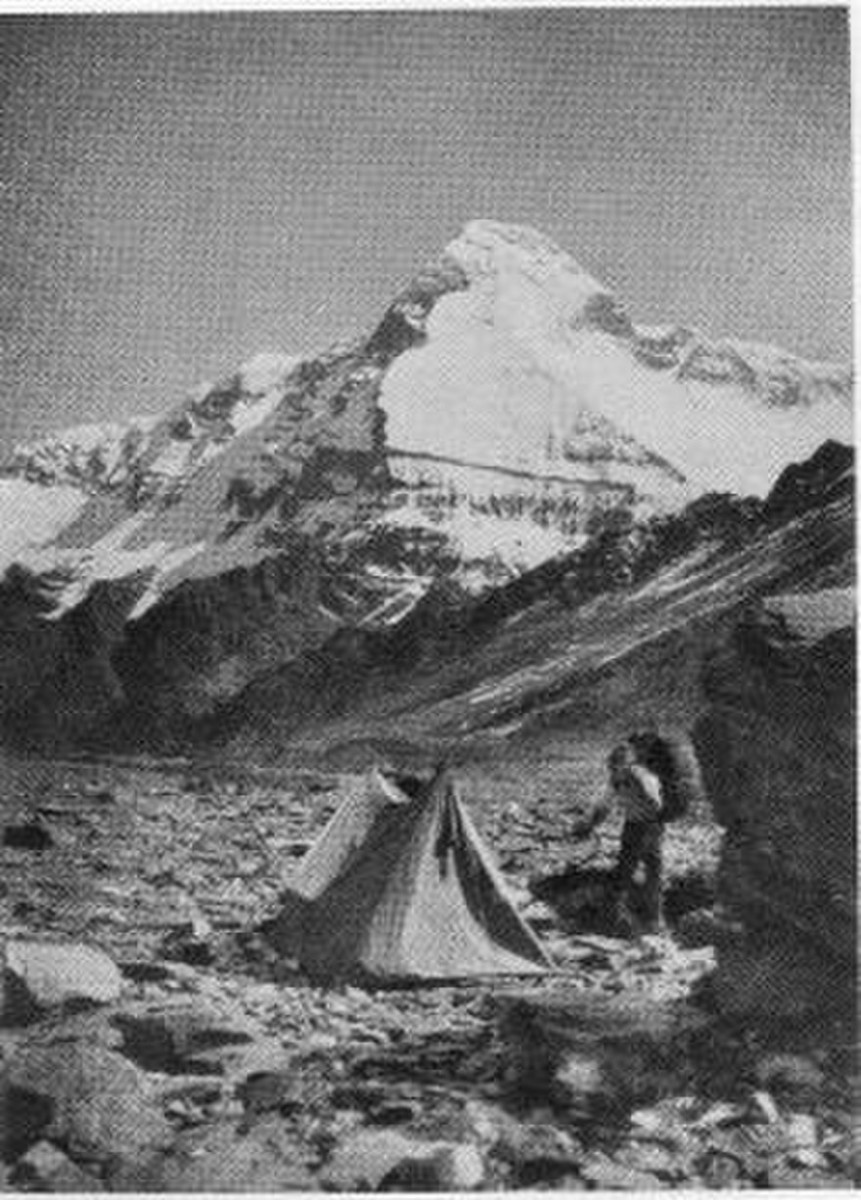
Nanda Devi south side - 1934
The terrible twins
In 1935, Eric Shipton, still accompanied by Bill Tilman (known as the terrible twins) and four other mountaineers, set off for Tibet. They headed for Everest for a reconnaissance expedition. Their objective: to bring back valuable information for the great expedition planned for 1936. Their group consisted of seven members, too many in the eyes of Shipton and Tilman. Tilman still had trouble coping with the very high altitude and was struggling to keep up. In spite of everything, they climbed twenty-six peaks over 6,000 meters!
1936, Nanda Devi, 7816 m: the hour of glory
1936: Shipton sets off again for Everest. Tilman was not part of the team because he had difficulty adapting to the high altitude. However, his moment of glory was approaching. An American team was planning to climb Kangchenjunga, the third highest peak in the world, on the Indo-Nepalese border. They invited Tilman to join them. But the Indian authorities refused to issue them with a permit. Tilman suggested the Nanda Devi as an alternative. Despite the monsoon in full swing, they set off up the now-familiar gorges of the Rishi Ganga. The defection of some of the porters meant that they had to carry heavy loads of 30 kilos per person. On 7 August, after many ups and downs, they reached the Sanctuary. Camp III on 21 August at an altitude of 6,120 m; camp IV at 7,050 m on 25 August. On the 28th, Bill Tilman and Noël Odell bivouacked at 7,200 m. The two men reached the summit at 3pm on 29 August 1936, after narrowly missing being swept away by an avalanche. Bill became famous.
1937: Karakoram, an unknown land
Located in the north-western territories of the British Raj, the Karakoram is home to 150 kilometres of an almost unexplored mountain range. A big blank on the map. All the more reason for our two companions to get together again: Tillman and Shipton. Among other things, they hoped to reach Snow Lake (4,877 m), so named in 1892 by the British explorer Martin Conway, and determine whether or not it was an ice cap. Incidentally, they could bring back geo-politically useful information for the British Raj. Small means, big results. They mapped a number of passes in the Karakoram, between Shimshal and K2, and completed the now-famous Biafo-Hispar traverse via Snow Lake.
1938: return to Everest
Although he had been excluded from the Everest expedition in 1936, his dazzling victory at the Nanda Devi and his supposed "leadership" qualities, in contrast to Shipton's muddled approach, earned Tilman the job of organising the next assault on the north face (Tibet) of Everest. Envisaged with a small budget and a reduced number of participants, the project suited him. Shipton, his eternal companion, as well as Noël Odell, a brother in arms with Nanda Devi, took part in this new adventure. Difficult weather conditions with heavy snowfall interrupted the progress. On 10 June, Bill nevertheless reached his personal record: 8,220 m without oxygen.
The Second World War, in which Bill played an active part, put an end to his alpine activities for eight years. He parachuted into Albania behind enemy lines to help the resistance. Later, he operated in northern Italy. Since then, an alta via (high road) in the Dolomites has been dedicated to him in memory of his exploits.
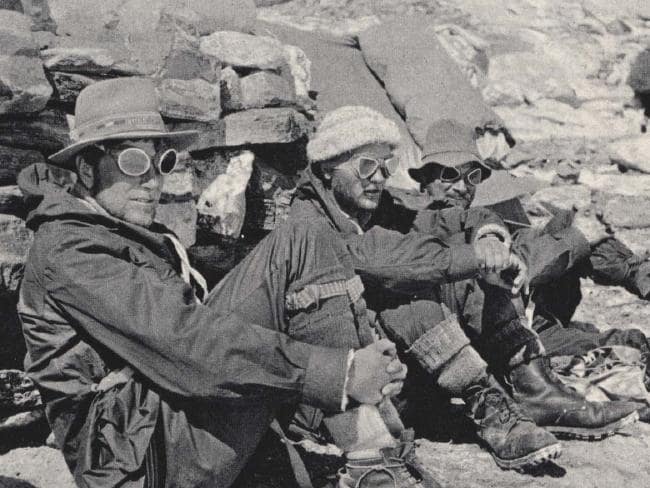 Bill Tilman (right) and two other climbers on the 1938 expedition.
Bill Tilman (right) and two other climbers on the 1938 expedition.
1947: last campaign in the Hindu Kush
The end of the war led him to flee England once again. His obsession: to return to the Himalayas. Invited by some Swiss mountaineers, he set off once again for the Karakoram. His objective: to climb Rakaposhi (7,665 m), located above Gilgit. But the project proved too ambitious for the small team, and they had to abandon the summit. This journey was to be the prelude to Bill Tilman's two years of peregrinations in the territory of the "Great Game", a latent geopolitical confrontation between England, Russia and China. This was Tilman's troubled period, when he was most likely working for the British intelligence services. During a checkpoint in Afghanistan, he pretended to be Russian, and therefore Soviet. He and his guide find themselves imprisoned. Once the mistake had been cleared up, the Afghans released them. He was able to tell his superiors the good news: the British were still in favour with the Afghans.
1949: Nepal, gateway to the south face of Everest
In 1949, Nepal tentatively opened its doors. Tilman obtained a permit for a complete exploration of the Langtang and Ganesh Himal, successfully climbing Paldor (5,835 m). Back in Kathmandu, he obtained another permit to climb Annapurna IV (7,406 m) in the spring of 1950. But bad weather put an end to the attempt. Tilman reached 7,020 m on 19 June. In the autumn, he organised the first trek to Everest Base Camp, on the south face. He had the privilege of being the first Westerner to reach Namche Bazar and walk on the summit of Kala Patthar (5,643 m). From this vantage point, he was able to observe at his leisure the famous Khumbu Ice Fall, the formidable ice cascade that was the Sesame to the South Face of Everest. Thanks to him, the route to Everest's South Face was taking shape.
But Bill was 52 years old. With his recurring acclimatisation problems and his increasing age, he realised that he had to turn the page on himalayism and the great explorations.
Join the next Everest climb via the Nepalese South Face or the North Tibet side.
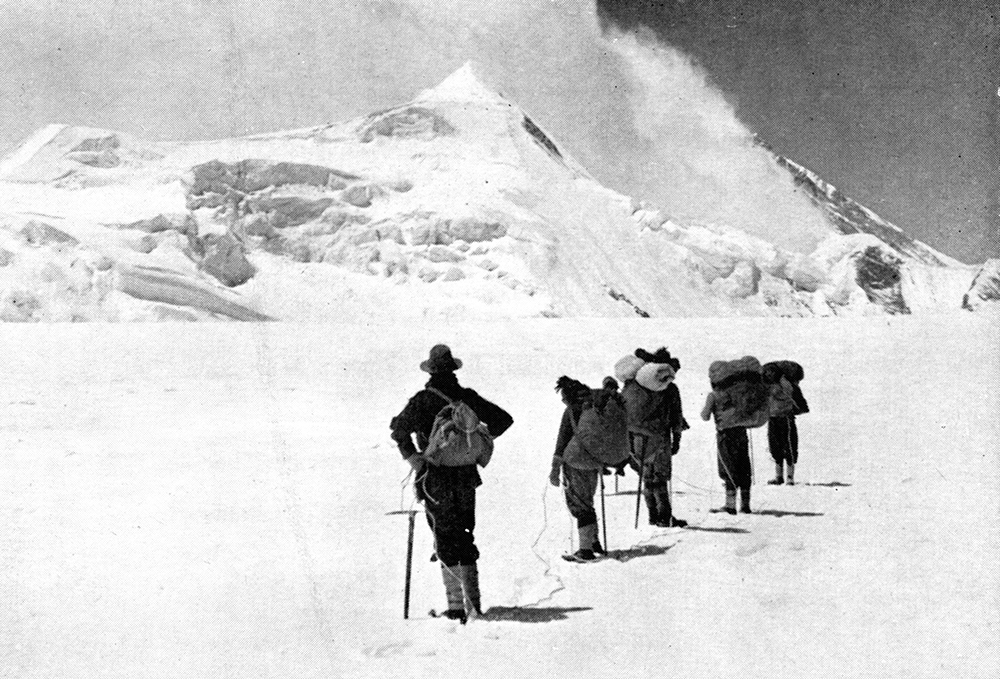
East descent from Lhakpa La, view of Everest © Bill Tilman
1953 to 1977: a long-distance sailor
After discovering the pleasures of ocean sailing at a late age, he devoted the last twenty-four years of his life to sailing in the southern and boreal seas, trying to reach numerous islands before climbing to their highest point. A good navigator on the open seas, but a poor sailor close to the coast, he was shipwrecked three times. His crew, who were poorly chosen, often had no sailing experience and were of little help to him.
In November 1977, with the idea of celebrating his 80th birthday in the Antarctic, he set off as an ordinary sailor on the En Avant, a makeshift vessel run by a young, inexperienced skipper. They were to sail to the Falklands (South Falkland Islands) and Smith Island at the tip of Antarctica. The ship probably sank somewhere between Rio de Janeiro and the Falklands, which had never been reached. To recruit his crew, Bill published advertisements typical of his dry sense of humour: "Crewman (male) for long trip on small boat. No pay, no prospects, not much fun". He disappeared as he had lived: discreetly, leaving dozens of grieving admirers.
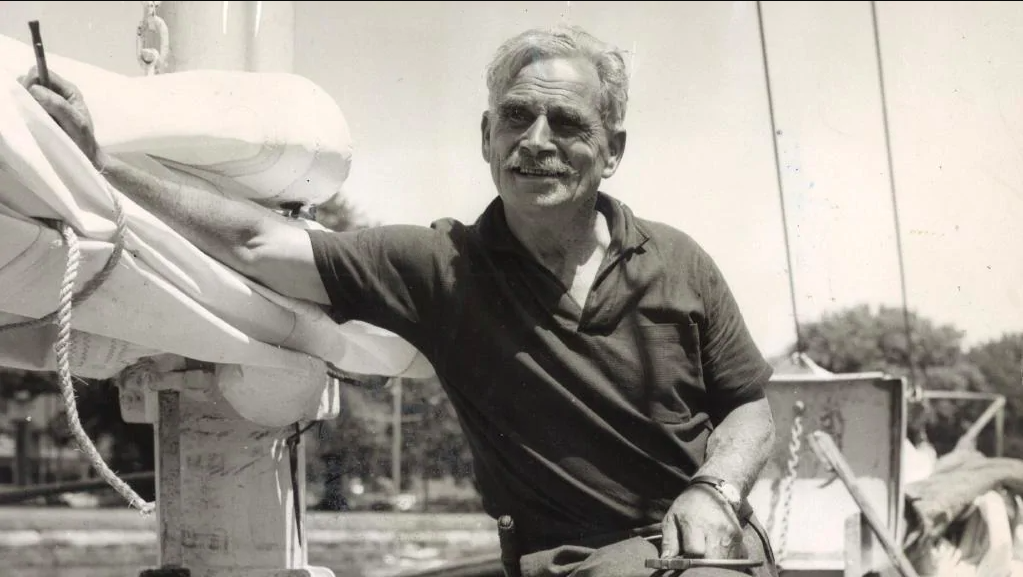 Bill Tilman on the Patanela in Sydney in 1964.
Bill Tilman on the Patanela in Sydney in 1964.
Text by Didier Mille.

Climb mount Everest at 8849 meters South Nepal side
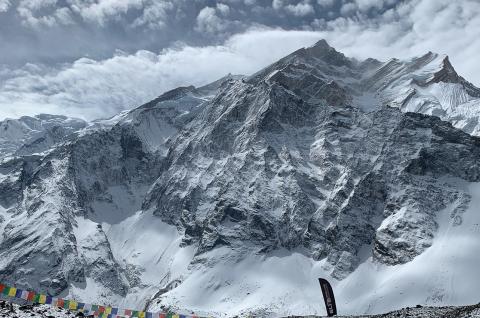
Climb Annapurna at 8091 meters in Nepal
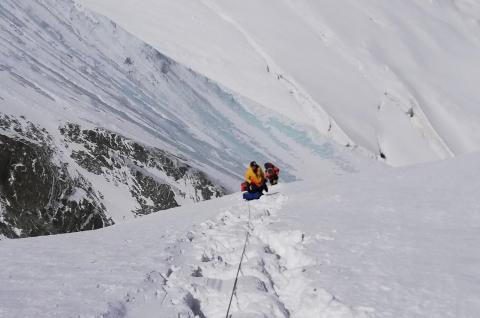

 Expeditions Unlimited blog
Expeditions Unlimited blog